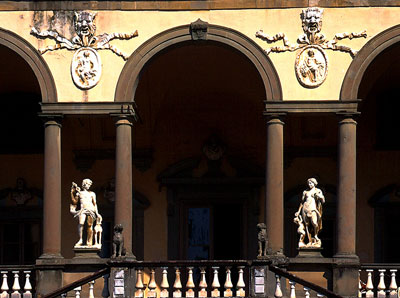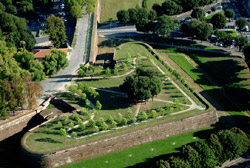The Lucca Walls Built between the first half of the 1500s and the middle of the 1600s, the Lucca Walls are still intact to this day. Composed of twelve terreplein joined by eleven ramparts faced with brick, they are twelve metres high, thirty metres wide at the base and over four kilometres long. With their centuries-old trees (plane-trees, horse-chestnut, nettle trees, red oak, etc.), the Walls are a large and charming urban park and a special approach to the city and the territory.
Ancient Villas of the Lucchesia Being close to the historical centre of Lucca was one of the main prerequisites for the construction of villas and second homes by the noble Lucca families of past centuries. An early census showed that, in the hilly areas in particular, there were 74 historical and monumental villas, many of which have large, highly-prized gardens that are a significant feature of the landscape. Together with the hill area facing the Lucca plain, from the 16th century onwards the construction of country houses spread in the territory of Lucca. They play a particularly significant role among its cultural and environmental assets because of their considerable historical, architectural and artistic value – a value that is appropriately protected and enhanced in the territorial system as a whole. The monumental villas of Lucca were the rich and elegant country homes of Lucca merchants. There are about 300 and they were built between the 15th and 19th centuries, mainly in the Lucca hills at the edge of the Lucca plain on the Pistoia side, behind the Pizzorne Mountains.


